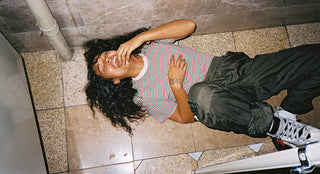David Bowie had a song once called “Changes.” Everything changes—the seasons, the neighborhood, the city, we as people. A lot has changed in New York City since 1992. Ask Princess Nokia aka Destiny Frasqueri from the block, and she’ll tell about how her whole world shifted when The Millennium hit. Hers is a story about unwanted changes and unyielding spirit. The year 2000 marked her entry into foster care, puberty, and the really unfamiliar and often unwelcoming land of high school, where nothing reminded her about her adolescent golden era of family, friends, comic books, old New York, and the feelings that she cherished as a clairvoyant child and self-proclaimed old soul. Ms. Destiny, no rookie to life’s peaks and valleys, has always sought refuge in her poetry and music. Reinvention, rejuvenation, and metamorphosis are processes that she’s always manifested throughout her bodies of work, none being or sounding anything like the prior. Her latest project, 1992, is an MC’s love letter to her mischievous and motivational trials as a New York City misfit, never quite fitting in, but also never doubting what makes her special.
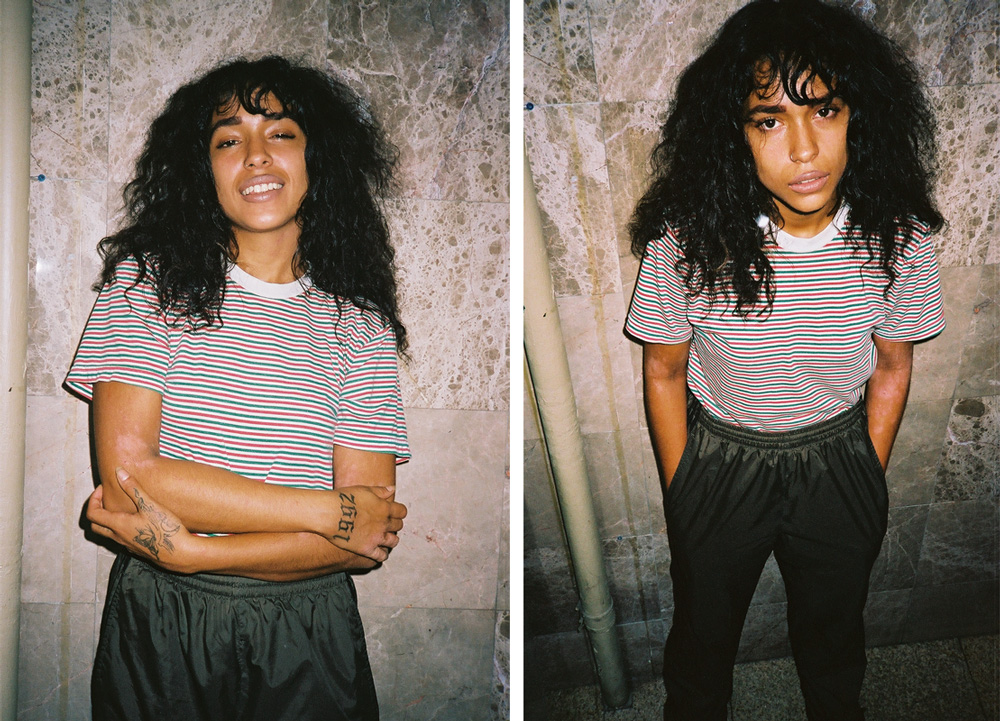
When I interviewed Princess Nokia, we linked on a rainy afternoon at a McDonald’s on 125th Street where brilliant jazz played out of the corporate speakers and more than a fair share of locals—some very evidently down on their luck—hovered in front of the franchise. Despite the bustle of patrons and bystanders, Destiny sat solemnly and quietly to herself with a halter top that exposed her caramel-skinned arms and shoulders and a pair of gold door-knocker earrings that adorned the sides of her head. She is very much that around-the-way, “yo, shorty rock” girl that blends seamlessly into any “Old New York” neighborhood. Don’t be fooled though, her small stature and mild-mannered appearance are a glaring contrast to her incredibly profound intelligence and vivacious personality. She’s a Gemini, duh.
Aside from 1992, our conversation spanned topics like the 500 plus years of Indigenous oppression, gentrification, colorism, hair culture, political revolution, and fashion. The not-so-typical hierarchy of concerns of a not-so-typical, 20-something Afro-Borinquen woman, artist, and practicing witch. The recent premiere of her “Brujas” video (directed an Asli Baykal), an ode to female-driven ‘90s cinema and Yoruban mysticism, is a necessary reminder that witchcraft roots, though highly integrated in popular culture, stretch far beyond the compartmentalizations or limited portrayals of Halloween and Hollywood.
RAINEY CRUZ: Your 1992 project starts with Bart Simpson. Are you a fan of The Simpsons?
DESTINY FRASQUERI AKA PRINCESS NOKIA: I’m a big Simpsons fan. I love Matt Groening. I’ve watched it since I was a child and still do.
Bart is a character that I fuck with a lot because I’m just like him. I’m always mooning people, pulling pranks, being mischievous, or scheming on something. He would also get in trouble or placed in detention and that’s very much who I am. I could never do anything right even when I tried to and so I always identified wit him.
I’m a little bit of Lisa too. Lisa is a dope feminist nerd. I’m like Bart, Lisa, definitely Maggie, Homer for sure, and even a little bit of Marge. Maggie actually shot Mr. Burns and if you see the episode when they grow up she actually becomes a rockstar! Homer is also the disappointing husband that I am. [Laughs]
“Most people of color that I know are metahumans.”
You also mention your love for Marvel comics in that track. Can you explain that?
I fuck with Marvel because they’re just my favorite comics. The X-Men are my favorite because they have the most realistic depictions and character development of people of color, especially women of color. There are a lot of Afro-Latin characters that I relate to and they are not these overly sexualized DC Comics characters. They’re actually metahumans. Most people of color that I know are metahumans.
I love Araña who’s the Puerto Rican and Mexican spider girl. Her name is Anya Corazon. She premiered about four years ago. Cecilia Reyes is another dope Afro-Puerto Rican character. I really like Storm more than anyone. She’s based on the Orisha Oya. There are many similarities that I nerdishly cling on to and base my fandom on.
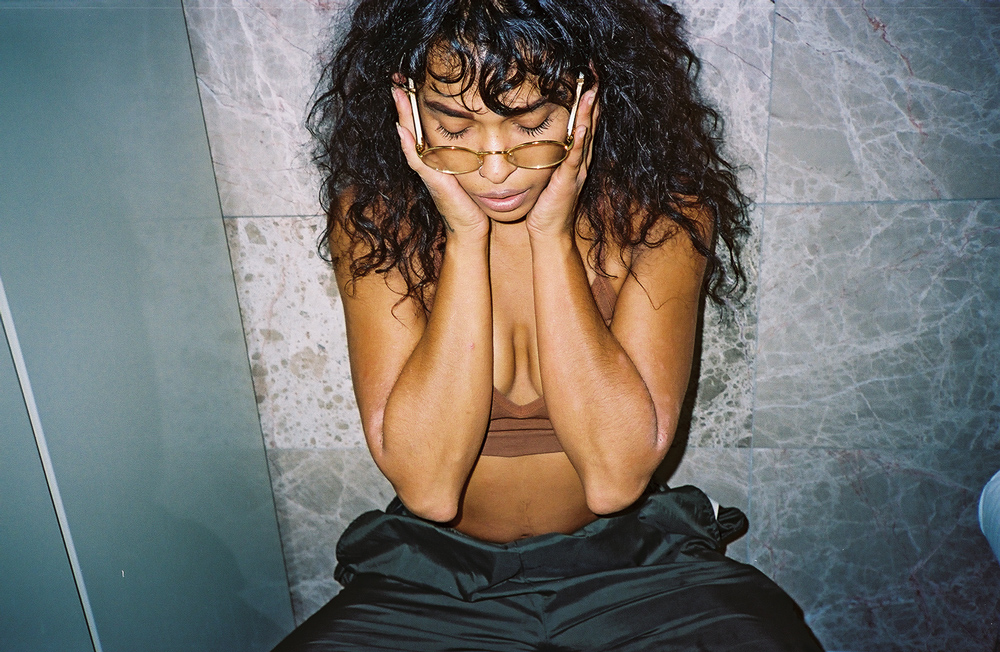
Tell me about the significance of 1992. Why is that the name of your project?
As soon as The Millenium hit, my life was ruined. My life changed drastically because I had to go into foster care in 2001. The ‘90s is my favorite era of time because it’s when I still lived with my family. It was before I got separated from all the things that made me who I am. I had a large capacity as a clairvoyant three and four-year-old. My memories are very vivid from that time. I didn’t like The Millennium and I didn’t identify with it. I also didn’t identify with children my age. I was always an old soul. I was a very advanced child and I say that very humbly.
The ‘90s is just what I identify with most—the timing, the music, the style, the flavor and attitude. When 2000 hit, I just wasn’t a part of the urban futurism. I didn’t identify with wear things like Pepe Jeans and Jordans, I was still on some raver, skater shit because that’s what I was put on to when I was like six or seven years old by this older goth girl who used to babysit me. By the age of six, I already knew about Marilyn Manson, Godsmack, Limp Bizkit, and Rob Zombie. Then by the time I was 11 or so and hit middle school in the 2000s it was the first time that I really felt like I didn’t fit in or get along with people. The ‘90s has always been this nostalgic period that I recall as my golden years.
“I was always an old soul. I was a very advanced child and I say that very humbly.”
Tell me about how the idea for 1992 came to be?
During the last couple of months of 2015, I hadn’t written a song or thought about music for a long time. I put out the Honeysuckle project then I was just physically and mentally exhausted from working really hard on it, touring, and not feeling like I was recognized for it. I felt really depressed and didn’t write any more music. I was also doing a lot of NyQuil and Xanax. I wasn’t producing anything and I felt like I was losing my mind.
Then one day after getting a little sober, I started writing on the train and I wrote “Tomboy” on my phone. I started writing rhymes, not songs. I remember thinking how it was different from anything I had written before. It felt so true to myself and my narrative. I feel like my earlier works were so egotistical, narcissistic, and superficial—and I love to admit that because I check myself all the time. I never knew how to write honestly in this neutral space. I haven’t stopped writing rhyme since.
When I first wrote “Tomboy” I went to Wiki’s [of Ratking] house and I spit it for him. He said it was “fucking amazing!” He was like, “Yo Destiny, I been told you, you gotta rap, you have a story that’s even better than mine.” He was right. I had to get my shit together. A lot of things became clear in a short period of time and I knew that if I wanted to really get into this, I really had to begin training as an MC and rapper.
I made “Tomboy” in January and didn’t put it out until May. I spent five months practicing, rhyming, and writing. That’s all that mattered to me. I just wanted to be ready and have my wordsmith abilities on point. I take hip-hop seriously. I don’t take a lot of things seriously, but I come from the old school of b-boys and b-girls and they are crafts that deserve respect. I don’t take “rap” seriously, though. I don’t give a fuck about Hot 97 or who knows how to freestyle because I’m a weirdo and I’m an imperfect musician that doesn’t feed into that. This idea is what cultivated my album. Taking hip-hop seriously and wanting to achieve becoming an MC.
Tell me about Wiki and Ratking’s influence on your music.
Patrick was my boyfriend and best friend for many years. He still is my best friend. He’s the best rapper that I know from our generation and from New York. He just so happens to be my ex everything. We’d hang out all the time whether we were together or not. He and I are musical counterparts and soul flames. We met making music and writing things like “Puerto Rican Judo.” We were just two rappers. That’s the premise of our love and connection to hip-hop. We came up together at only 19 and 20 years old and I feel that I was lucky to share my life with someone that had influenced and inspired me so much with who I was as an artist. It’s very interesting to see how we circle back. I’ve been on every Ratking and Wiki project and he’s been on my stuff.
You got together with A-Trak on your song “Kitana.” How did that happen?
Alain [A-Trak] is a friend of mine. We’ve been friends for a couple of years and we’d been discussing some stuff. We got into the studio, he played me three tracks, and when I heard that one I thought, “This is fucking fire!” It was aggressive and I found some of my music for it. But then he had to leave about 15 minutes in and I had to do it by myself with the engineer. It was beautiful and wound up sounding great. That was it and then I just went home. That’s kind of my life.
I don’t really have relationships with music industry folks but Alan is a very nice guy and he’s always been down to work with me. He wanted to sign me to Fool’s Gold.
“I feel like my earlier works were so egotistical, narcissistic, and superficial—and I love to admit that because I check myself all the time.”
Why that name for the track? Are you a fan of Mortal Kombat?
I love Mortal Kombat! I’ve also dressed up as Kitana and Jade for the 2014 New York Comic Con. So Kitana has always been my bitch. Finish him!
You worked with friends and producers Bass Bear and Blanco Niño for “Brujas.” What was that like?
They are like my favorite people in the world. I love to hang with them. They’re such crazy nerds and I’m the same. Sometimes I’m with them and I don’t want to leave them.
Tell me about the samples in that track. The intro and outro voices.
The “I’m your supreme” is me. I altered my voice for it. The ending sample is the voice of Marie Laveau from American Horror Story’s third season, “The Coven” which is about a New Orleans witch school. Marie Laveau is a Haitian voodoo priestess. There’s also another witch who’s the supreme of the white witches. And not “white” as in good. So Marie is the supreme of the black race witches and Fiona for the white race witches. Fiona has cancer and is dying, but she knows that Marie has been immortal for 300 plus years and still looks gorgeous. Fiona is the supreme, but she cannot prolong her life. When she turns to Marie for her power of immortality Marie lets her know that everything that she and her white witch lineage uses has obtained from her people. She describes how their magic derives from the Arawak, a 5000-year lineage of shamans.
I am actually a descendant of the Arawak from the Caribbean. They are speaking on the whole Afro-Caribbean diaspora story and post-colonial, post-slavery magic. I am a Yoruban and Arawak woman. I have had my DNA tested. I always knew that, but then it was confirmed. I take my native bloodline very seriously because I understand that 500 years ago is not a long time. I also understand that my connection to my powers and my relationship to magic and Brujeria is very family-oriented, cultural, and matriarchal. I just thought that scene was so fabulous because it was denouncing white privilege.
I really love that song and the video is really good. We made a black girl version of the movie The Craft.
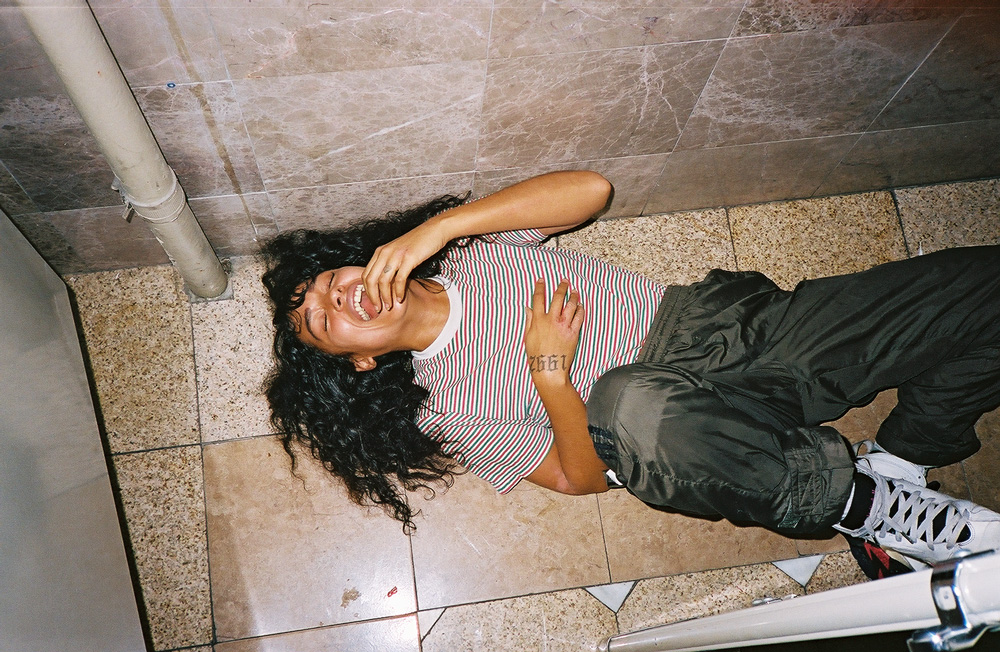
I love the track “Mine.” Can you break down your experience with hair?
When I started wearing hair and putting hair in, it opened me to the scope. I think that women of color have qualms with their hair and fake hair is very demonized as this ghetto attribute. I think that is so far from the truth. When I started wearing my wigs, I had so many people asking me about it and I think it had a lot to do with colorism. It had to do with me being a light-skinned girl that had very thick long hair that looked like it could’ve been mine or not. I’m very pro-black and anti-colorism.
I wore an afro wig in Mexico once because my hair can’t keep my afro intact in the heat. I had people throughout the entire trip asking me if it was my hair, at night, at lunch, at dinner, at the show, at the hotel. I felt humiliated to be put on the spot like that. It could be something that you have to give an answer for, but then I thought, “No, you don’t ask a woman that.” It’s a curiosity because people like to fetishize women of color and anything that’s so accentuated is interesting.
“I love writing narratives about women in the ghetto, who are my biggest inspiration.”
I have a lot of respect for dark and black women, who I come from, and their qualms with hair texture and maintenance. I had to learn this later in my life because I didn’t grow up knowing how to care for my mixed hair. A lot of Afro-Latina women aren’t. Upon accepting that I was a black mixed woman with black mixed hair, I also understand the scope of all women—Dominican, Puerto Rican, West Indian, Asian, Southern Black, Afro-Caribbean, Indian—and everyone’s got their hair game on fucking deck. It’s the language of the ghetto. From the Koreans that own the store to the Indian girls who cut their hair. It’s literally all interweaved, no pun intended. [Laughs]
I love writing narratives about women in the ghetto, who are my biggest inspiration. It’s about sharing mutual ground because there are a lot of grey areas about who can claim what. So I wanted to make this mutually exclusive song for all types of women of color who have their own hair narratives.
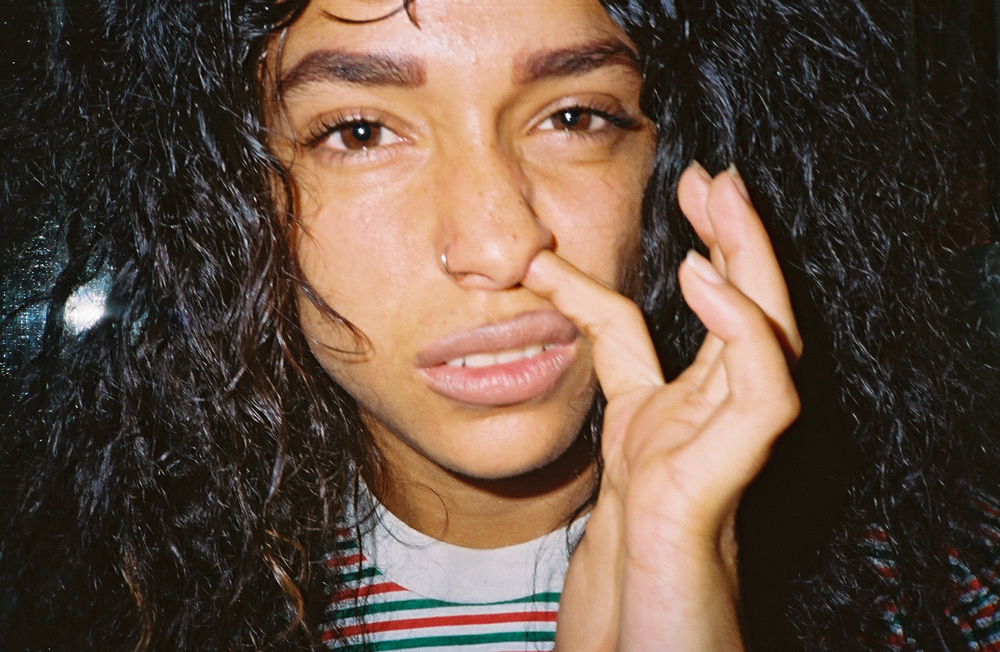
Do you miss the old New York? How important is that nostalgia in your music?
I got out at St. Mark’s the other day and had a vision of the way it used to look that replaced what it looks like now. I saw the cube and the old Mud truck. You would also be able to see the Carl Fisher mural before the big high-rise was placed there. I thought about the crust punks from Tompkins Square Park and how I would hang outside of the record shop while my dad would attend AA meetings there. I literally saw all of that and I cried. It hit me really hard.
I am a true New Yorker and so are my parents. Because my memory of the ‘90s are so vivid and nostalgic, I think that I really hold on to that. I don’t like to be bitter or say things like New York is over. I just don’t know who to be angry at so I just use that in my art to recycle, remember, and relive all of those very special parts of New York and my own identity.
What about gentrification and how it’s becoming such a domineering force throughout the city?
I’m anti-gentrification and I’ve been cursing out white people all summer! I’ve cursed them out on the train, but have often felt no support from others like, “Hey, you were right girl!” I don’t want to be left out there looking stupid in front of these people. But that’s okay. The Young Lords weren’t understood by their parents or elders when they were doing radical stuff against anti-elitism in the ghettos. I’ve got some initiatives coming up, but I don’t talk about it. Real Gs move in silence, trust me.
Who are some of your MC and musical influences?
Definitely Fox Boogie Brown, Lauryn Hill, Bahamadia, Jean Grey, Lil Kim, Queen Latifah, Debbie Harry of Blondie. She’s probably one of my biggest influences. MCs like Big Pun, Eazy E, Biggie, The Beastie Boys, and DMX. I’m also inspired by classic groups like A Tribe Called Quest, The Pharcyde, Digable Planets, and Onyx.
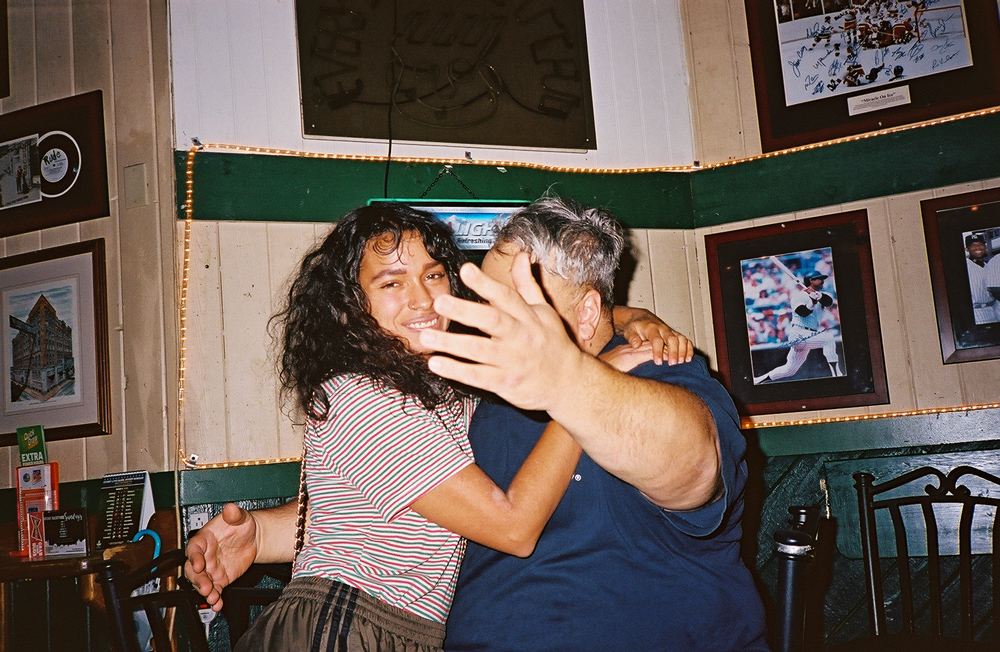
You’re heading out to Europe for a big tour to promote this project, will this be your first time out?
I’ve been to London twice in my early career years. That’s where my biggest demographic was playing my music. I have a relationship with them and I’m really excited to go back.
Aside from music you’ve also dabbled in modeling for brands like Calvin Klein. How did that come about?
That was prophesied to me when I was younger. I understand that I have a specific look. Before I was Princess Nokia, I would just model for Reebok and Vice and stuff. It was just independent stuff. I would go to castings, get booked, and that was just what it was. I was no stranger to it. I also used to work in fashion for a tiny bit before music.
The recent campaigns have spiraled. For the Calvin campaign, they had their creme de la creme of youth subculture like Kendrick Lamar, Justin Bieber, and even Joey Bada$$, whose music was way more listened to than my own. I was kind of an anomaly as the only artist that was really still underground. I also felt like an actress. I think that the agencies just know that there’s this ‘90s New York, raw, older model quality about me. That’s why they book me. I did Calvin, Target, Gap and it was a lot of fun. I love to do it. I don’t think of corporations as this negative impact on capitalism. I think that there are worse things in life and I’m living really good off of those motherfuckers.
There’s been a lot of publicity about the recent Dakota [Access] Pipeline plans and the protesting at Standing Rock. As someone that identifies strongly with her Native American roots, what are your thoughts on the matter?
The Dakota Pipeline resistance has brought up a very common experience that happens at reservations. Large oil and gas corporations have used and drilled in reservation territory, which is illegal according to treaties that were made in the past. But the way things have gone regarding health issues and land issues in the past, it’s like fuck the treaties. The U.S. has always imposed itself on the Natives, but not on issues where they need it the most. There are definitely other pipelines in native territory. There are some native people that have received money for it and there are native people that have not and have suffered behind it. The whole premise against the Dakota pipeline is a preventative measure that would protect against a break, accident, or spill that can potentially damage a large water supply.
There needs to be attention placed on Native issues in general because they, like black people and Latino people in America, are still the most oppressed and suffering group of people. People don’t seem to realize that. They think that Native Americans are largely this ancient, primal, nonexistent people or myth long gone. Again, 500 years ago is not a long time. There’s so much more going on than just the building of a pipeline. There’s rape, there’s abduction, heavy drug use, and alcohol abuse. Reservations make The Projects look like the Upper East Side. That’s all I want to say.
If you could speak with a young Destiny, what would you tell her?
Don’t let anybody take advantage of you. Don’t trust anyone. I would’ve told her to stab a few people. I would’ve taught her to definitely get out of foster care way earlier. Hold on. Wait—I’m getting carried away. I would tell her mami everything’s going to be okay. All the little visions that you have of yourself will come true. I’d say have a good time. Don’t let him put it in! I don’t know. I’d say a lot of things to myself and they’d all be inappropriate. I’d tell my little self the most inappropriate shit in the world. Because that’s just what little Destiny is—very perverted, inappropriate, and weird. I also would’ve given myself an almanac and been at the bookies every year. I’d be a millionaire. That’s what I would do with the space time continuum. Fuck saving JFK or Martin Luther King Jr. [Laughs]
***
Princess Nokia is currently on tour, follow her in Instagram for tour dates @princessnokia. Follow Destiny on Soundcloud. Photos by Buddy (@oneshotbuddy).

